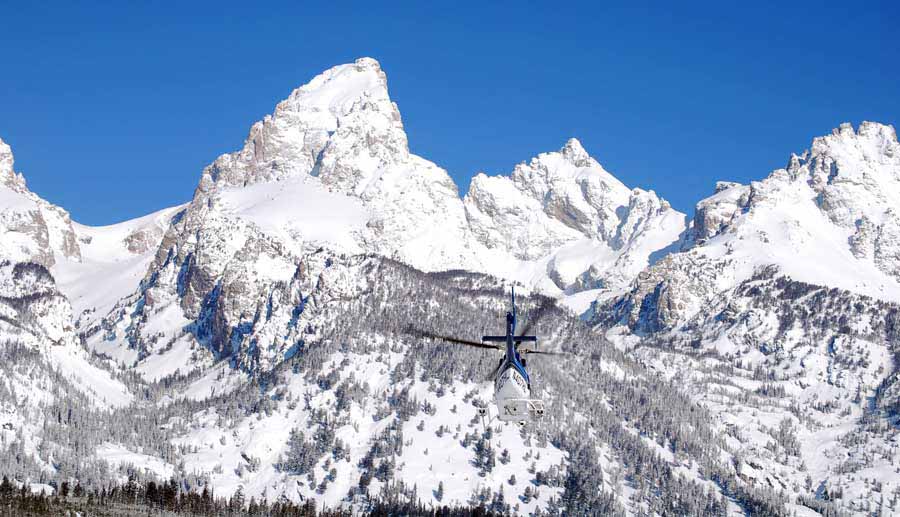
A helicopter heads toward Garnet Canyon in April 2011 during a search for two lost skiers in Grand Teton National Park. (National Park Service file photo by Jackie Skaggs - click to enlarge)
By Ruffin Prevost
An injured hiker climbing Albright Peak in Grand Teton National Park was flown out by a helicopter Wednesday after she received medical assistance from park rangers.
Danielle Mendicino, 21, of Las Vegas, was attempting to summit 10,552-foot Albright Peak with a climbing partner when she slipped on snow and fell approximately 50 feet before coming to rest in a rocky talus field, according to a statement released Thursday by the Grand Teton public affairs office.
Coincidentally, rangers were completing training on the short-haul rescue technique — where the subject is suspended beneath a helicopter by a rope and extracted from mountainous terrain — when they were dispatched just before 5 p.m. to assist Mendicino.
Two rangers boarded a Teton Interagency contract helicopter from the training site and accompanied the pilot for a reconnaissance flight of Albright Peak and the Death Canyon area.
During the initial flight, the pilot and rangers located Mendicino and decided to land at the top of Albright Peak. One ranger descended about 750 feet, reaching Mendicino at 6:10 p.m. to deliver first aid and prepare her for the short-haul extraction.
Mendicino was flown via short-haul to the White Grass Dude Ranch where she was met by a park ambulance about five minutes later and transported to St. John’s Medical Center in Jackson, Wyoming.
Mendicino’s injuries prevented her from hiking out on her own, according to park officials, and rangers estimated that it could have taken up to 10 hours for Grand Teton search and rescue workers to reach and rescue her without using a helicopter.
In a short-haul rescue, as was the case with Mendicino, the subject is typically secured in a harness, stretcher or other rigging and accompanied on the brief rescue flight by a ranger who also is suspended below the helicopter. The method allows a rescuer more direct access to an injured party, and it is often used in the Teton Range where conditions make it difficult to land a helicopter in the steep and rocky terrain.
Mendicino was carrying an ice axe, but was unable to interrupt her fall, according to park officials, who also report that she was wearing tennis shoes, and did not have experience hiking on snow.
Park officials advise that backcountry climbers should be in good physical condition and stick to hikes and routes that are within their ability and comfort levels. They should have appropriate equipment, and know how to use it.
Hikers, climbers and skiers are reminded that most accidents involve slips on snow or ice, and most occur on the descent at the end of the day. They are advised to stop in or call a visitor center or ranger station before an outing for current trail, route and snow conditions.
Contact Ruffin Prevost at 307-213-9818 or ruffin@yellowstonegate.com.
